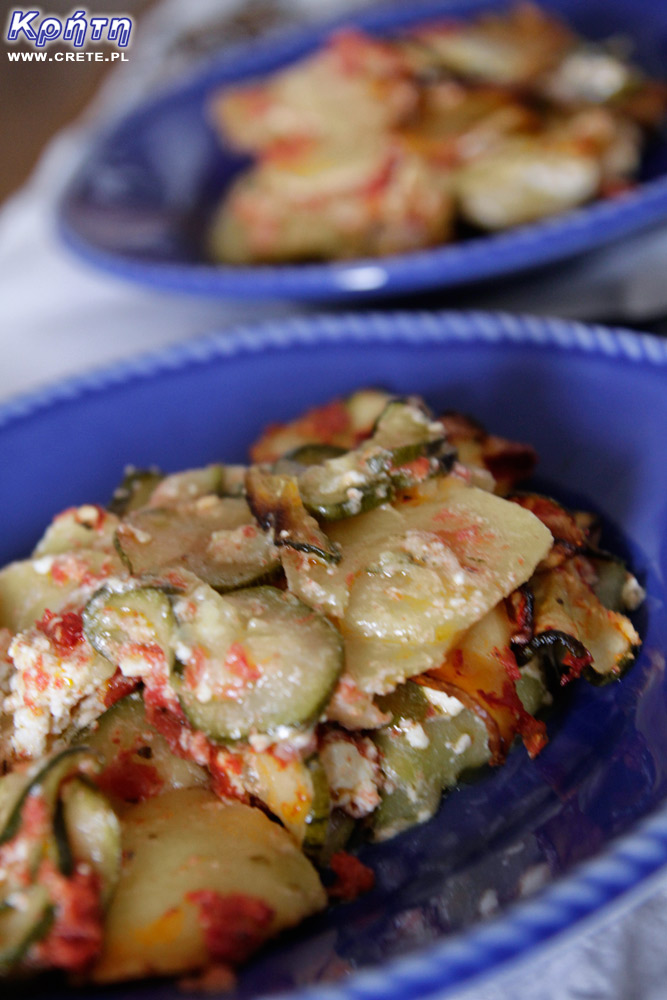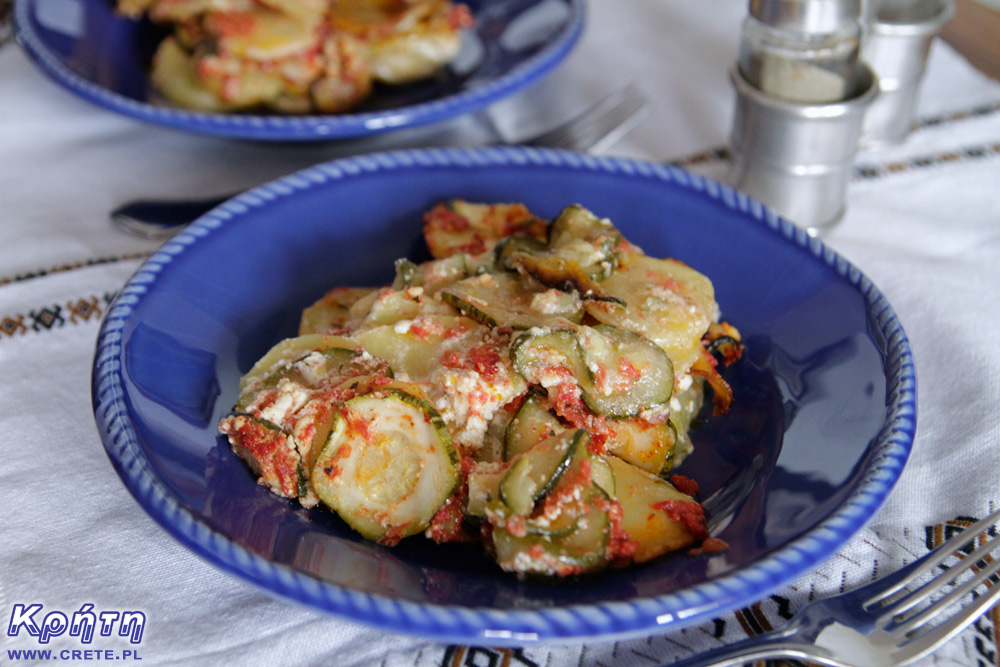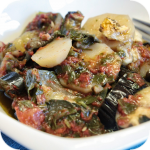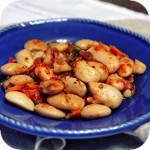

Briam is one of the most famous dishes of Greek cuisine. Depending on the region of Greece, this vegetable casserole consisting of zucchini, potatoes and eggplant has many variants. Even on our site there are two recipes for its preparation. Today we will add another one that definitely surprised us. We ate briam prepared this way in Paleochora in one of our favorite family traditional taverns this year. What makes this briam different from other recipes is the fact that there are no eggplants in the composition. This slight difference affects the taste. In this case the saying that less is more works ;-) So far this recipe has become our favorite.
Compared to other versions, this is probably the simplest version to prepare, which does not mean, however, that it is less time consuming. Unfortunately, this dish is not light because briam must spend enough time in the oven. We highly recommend trying this recipe.
1. Cut zucchini and peeled potatoes into thin slices. We rub the tomatoes on a grater with thick eyes, rejecting the skin.
2. Transfer zucchini and potatoes into a deep and large ovenproof dish or deep pan. Salt with sea salt, sprinkle with oregano and pour olive oil generously. Mix everything thoroughly, add crumbled feta cheese and mix again. Finally, pour the evenly grated tomatoes over the vegetables and finally some more oil.
3. Briam bake uncovered at 150 degrees for about 2 hours. If you notice that the vegetables are starting to roast too much during baking, you can lower the temperature slightly.


Briam is a simple Greek vegetable casserole prepared according to traditional recipes based on potatoes, eggplants and courgettes with the addition of tomatoes, garlic and parsley, very much oiled with olive oil. This recipe has many modifications that differ in the addition of ingredients or the way of preparation.

Gigantes Plaki is a popular Greek dish, which consists of a large bean baked in a tomato and herb sauce. Perhaps some of you during your holiday have already had the opportunity to try this delicious and filling meal. If not, it is worth to prepare them at home. It should also appeal to vegetarians, because vegetables prepared according to Greek recipes are full of flavor and very aromatic.

I have never had a good opinion about stuffed vegetables. I always associated them with a bland and not very tasty dish. Until I came across a Greek way to prepare stuffing. The proportions and its ingredients are excellent, so stuffed peppers for good has settled on our table. And the Greeks once again proved that they know how fantastic vegetables can be made. The dish needs a lot of ingredients, but the compilation tastes great, so you should not eliminate anything. If you get some stuffing, you can use it to stuff tomatoes. It will also be good, although the pepper works better due to the specific, distinctive taste. As in the case of other dishes in which feta occurs, do not use its Polish or German substitutes, because these cheeses taste completely different than the original Greek feta, which combined with a large amount of herbs clearly enliven the taste of the dish.
Komentarze
komentarz z
A która to tawerna w Paleochorze ?
komentarz z
Samaria.
komentarz z
CRETE - Kreta dziękuje bardzo, często jestem w tej czerwonej miejscowości
komentarz z
To polecamy, najsmaczniejsze mają właśnie dania wegetariańskie.
komentarz z
CRETE - Kreta Dzięki! Właśnie takich dań nieco mi brakuje w kreteńskiej kuchni.
komentarz z
Dzisiaj na kolację briam smaczne z feta i do tego paksymadia
Wypełnij poniższy formularz aby dodać komentarz
lub kliknij w poniższy link aby skorzystać z możliwosci komentowania przez facebooka:
https://www.facebook.com/crete.poland/posts/10156503547097551